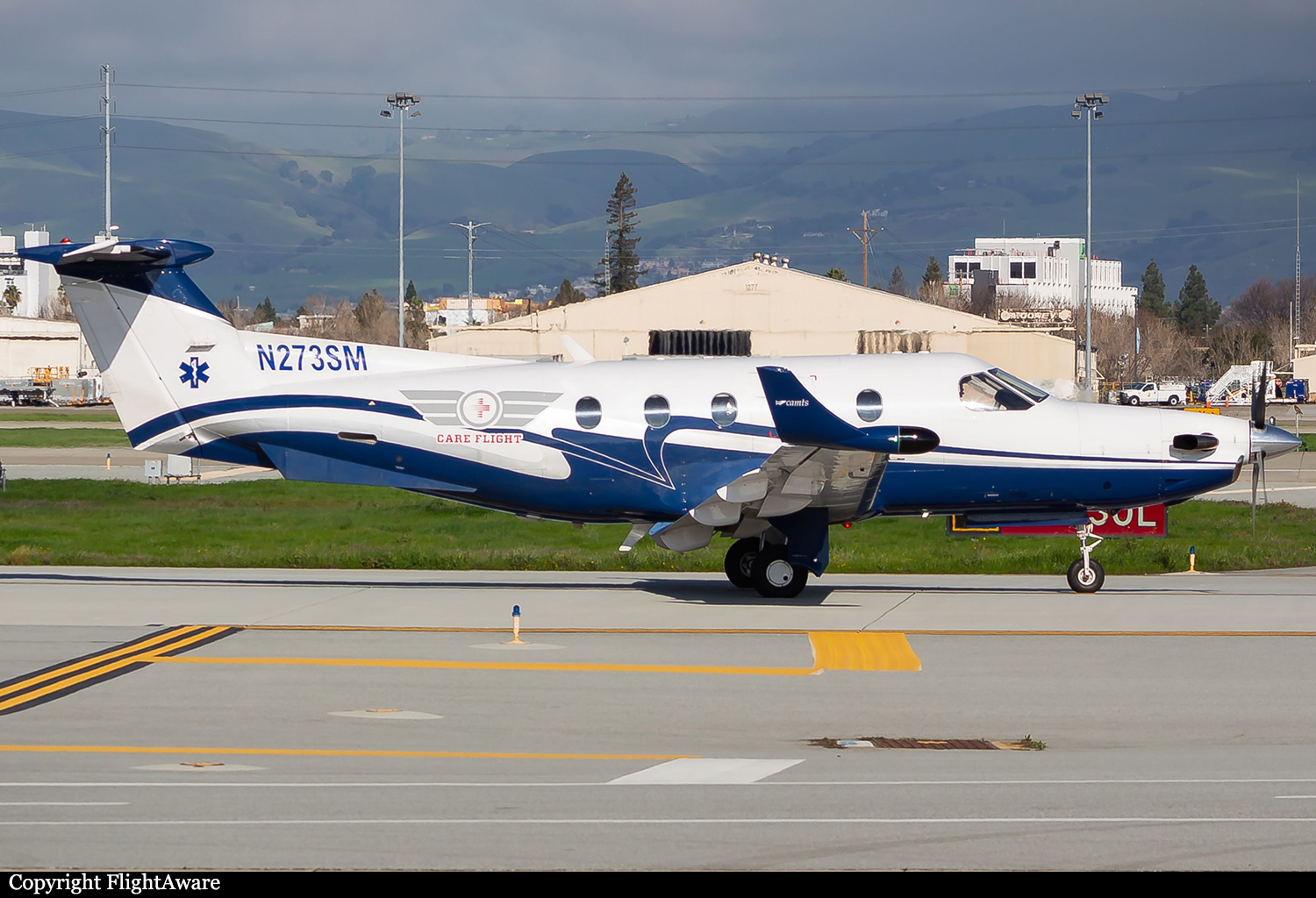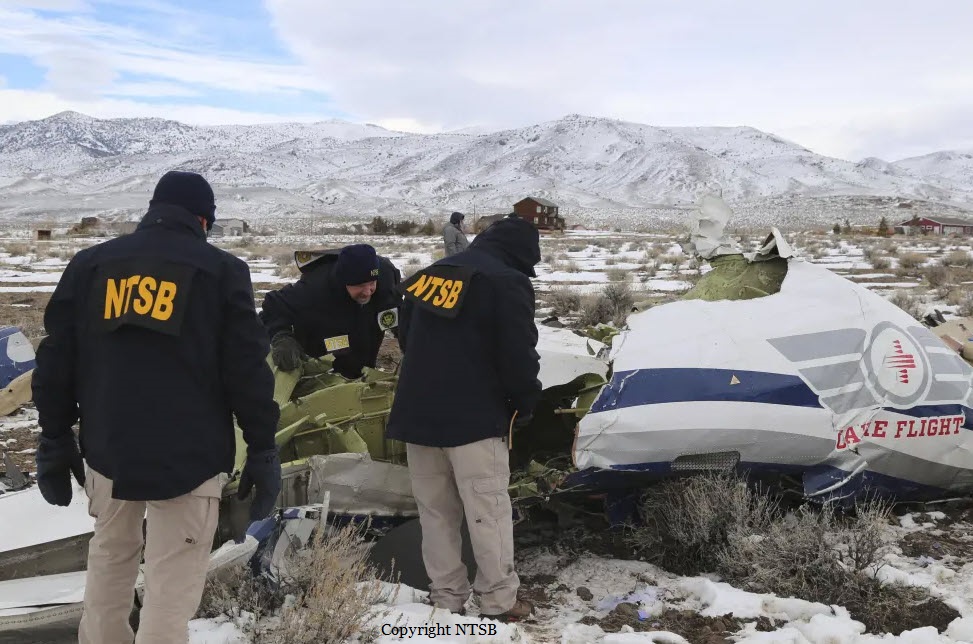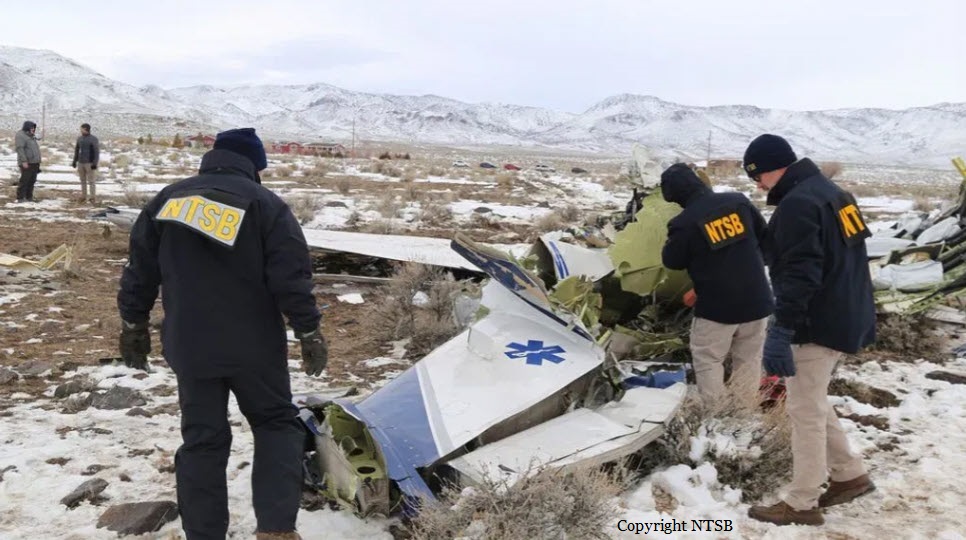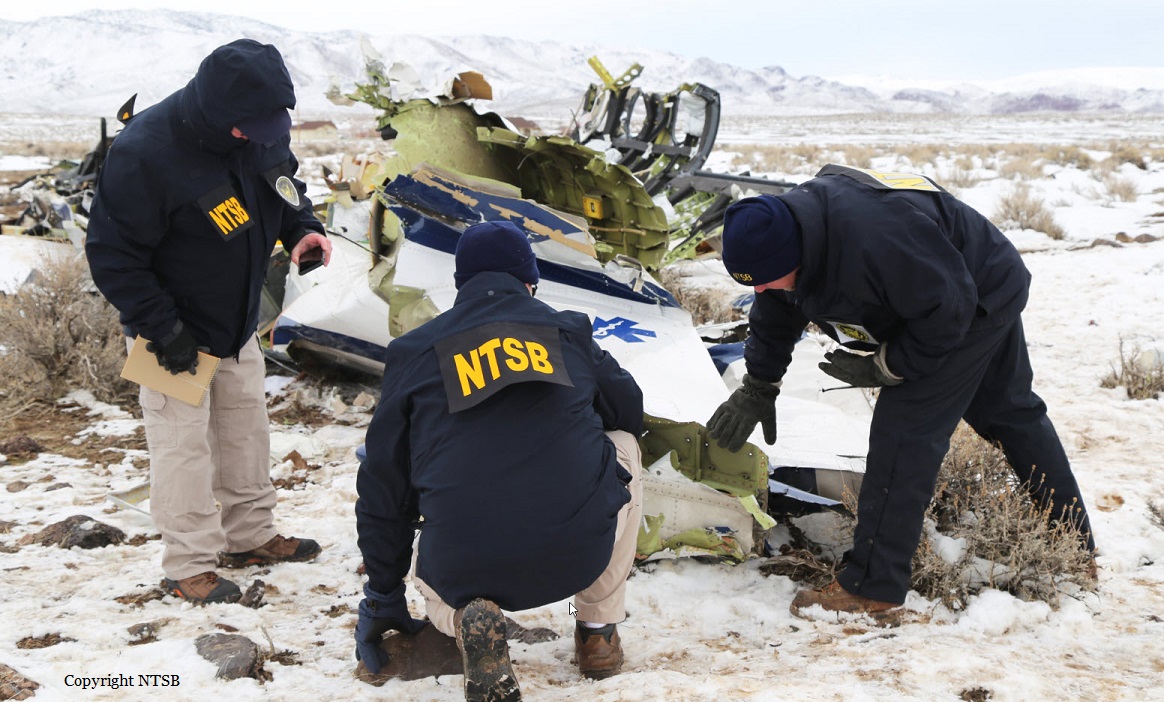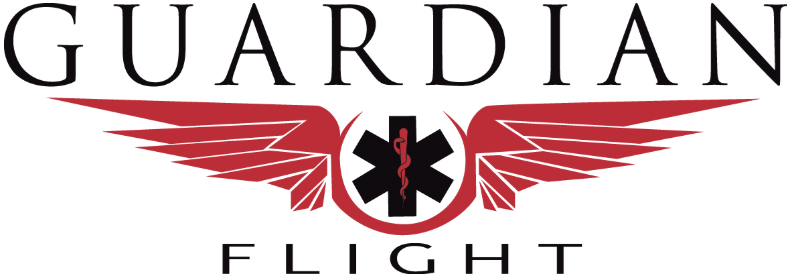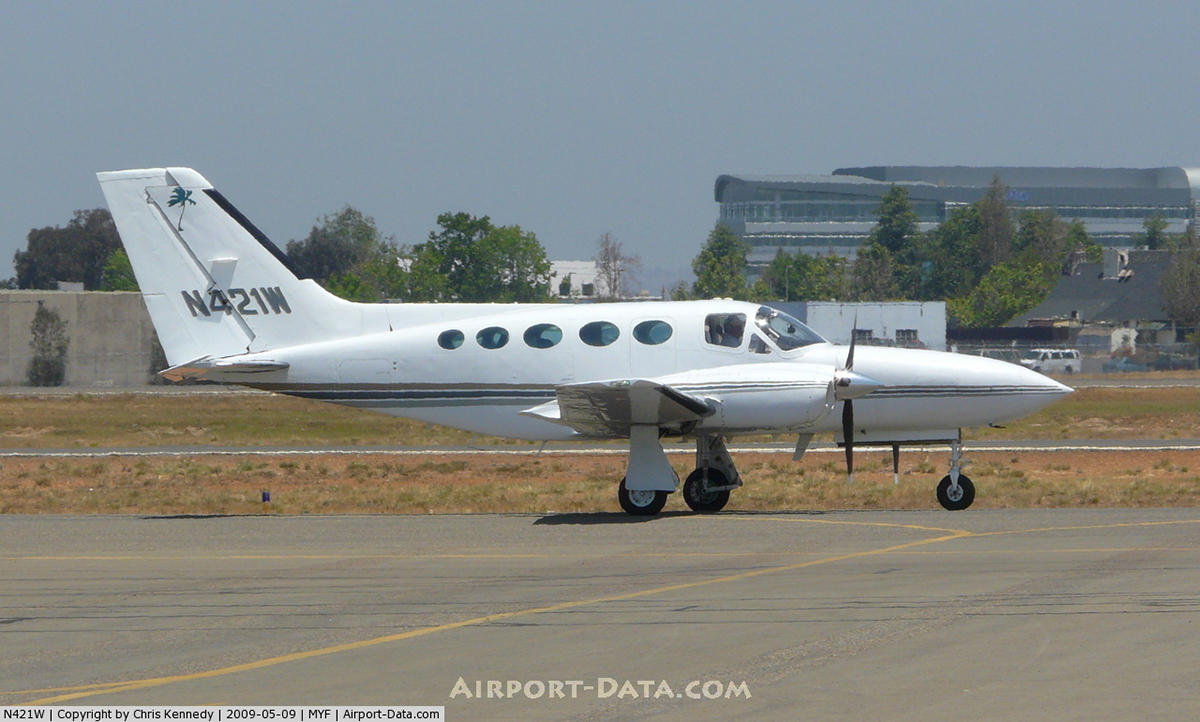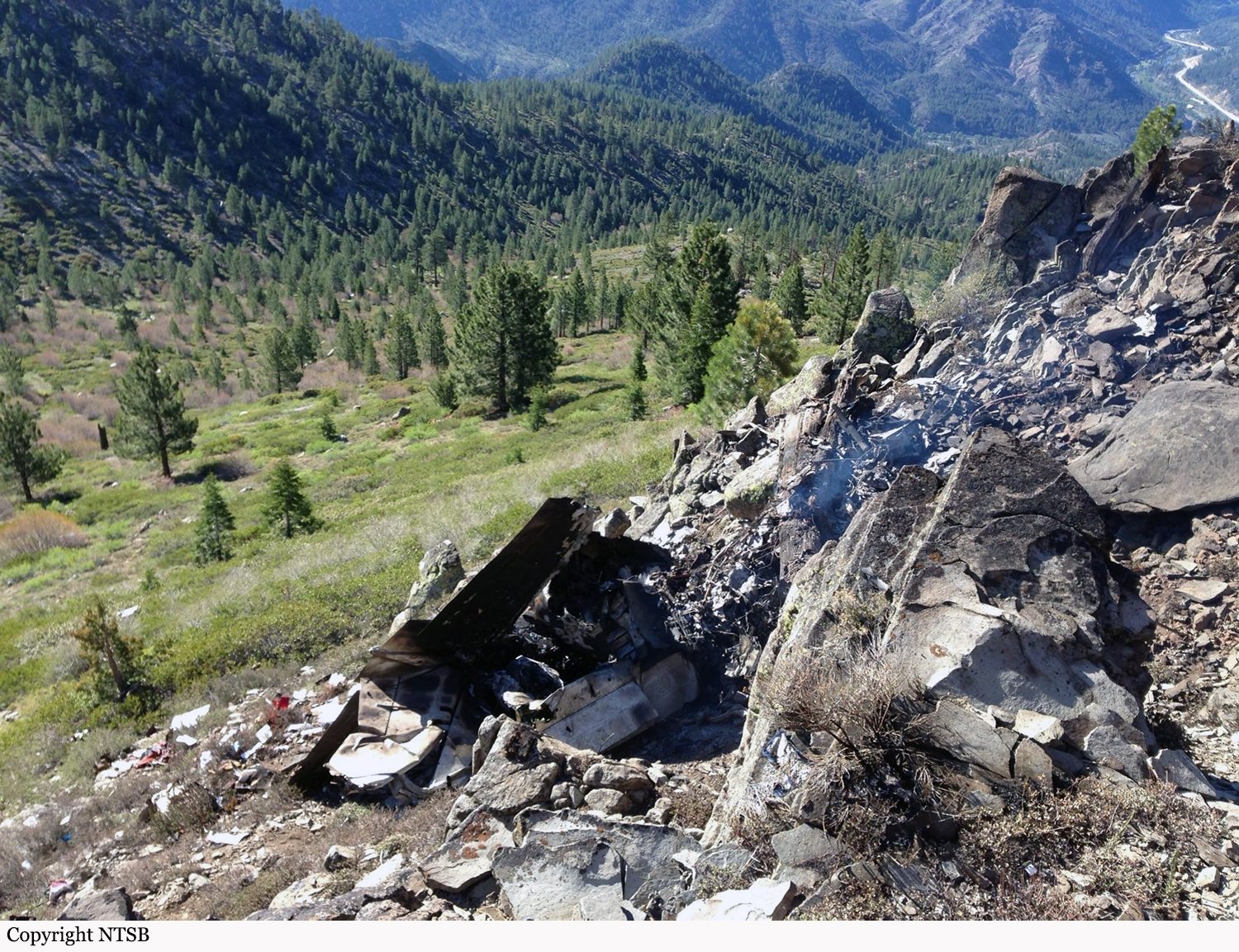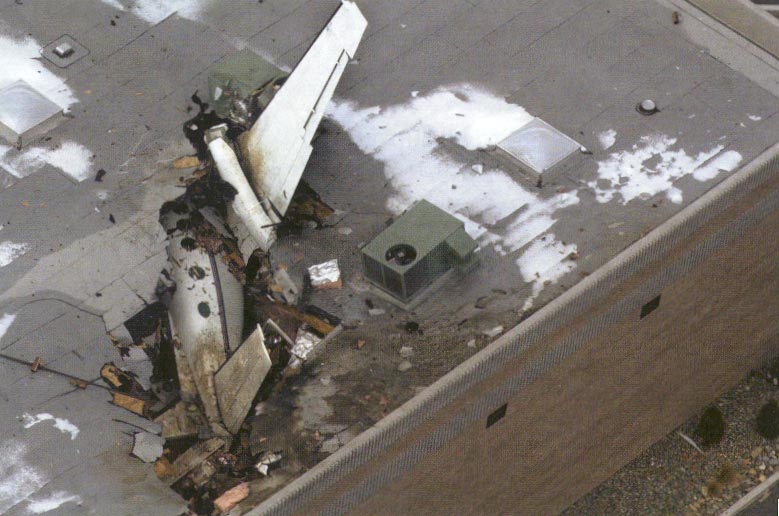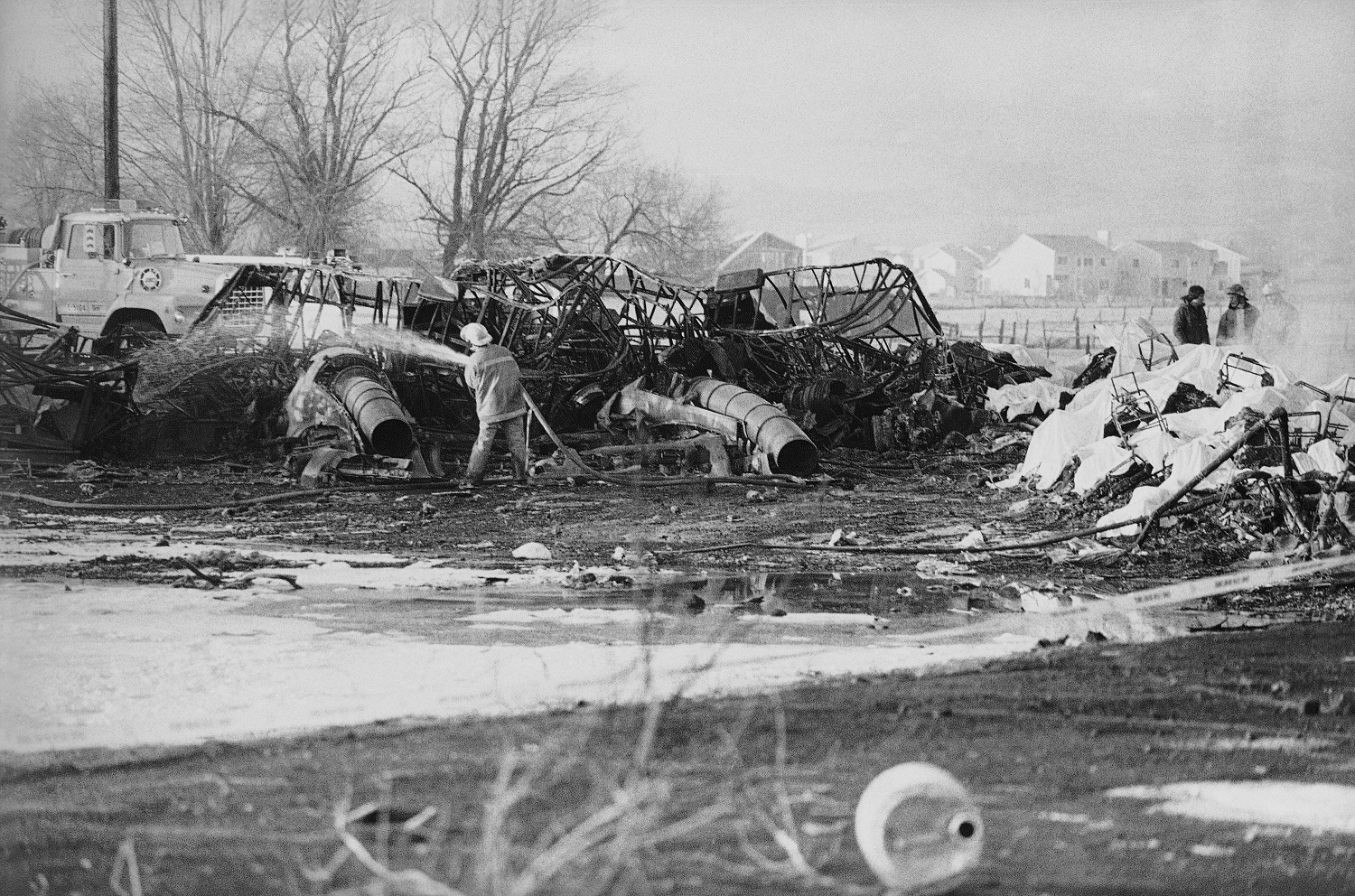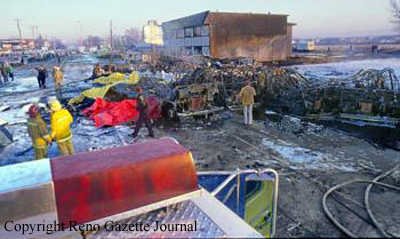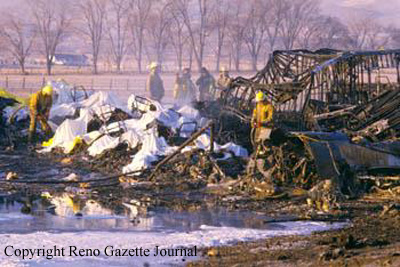Crash of a Pilatus PC-12/45 near Stagecoach: 5 killed
Date & Time:
Feb 24, 2023 at 2114 LT
Registration:
N273SM
Survivors:
No
Schedule:
Reno - Salt Lake City
MSN:
475
YOM:
2002
Crew on board:
1
Crew fatalities:
Pax on board:
4
Pax fatalities:
Other fatalities:
Total fatalities:
5
Circumstances:
The single engine airplane departed Reno-Tahoe Airport Runway 16L at 2058LT on an ambulance flight to Salt Lake City, carrying four passengers and one pilot. During initial climb, the pilot made two successive turns to the left according to the procedure then continued to the northeast. At 2113LT, at an altitude of 19,400 feet and at a speed of 191 knots, the airplane initiated a right turn then entered a spiraled descent and crashed one minute later in a snow covered prairie located southwest of Stagecoach. The airplane was destroyed by impact forces and all five occupants were killed, a pilot, a flight nurse, a flight paramedic, a patient and a patient’s family member.
